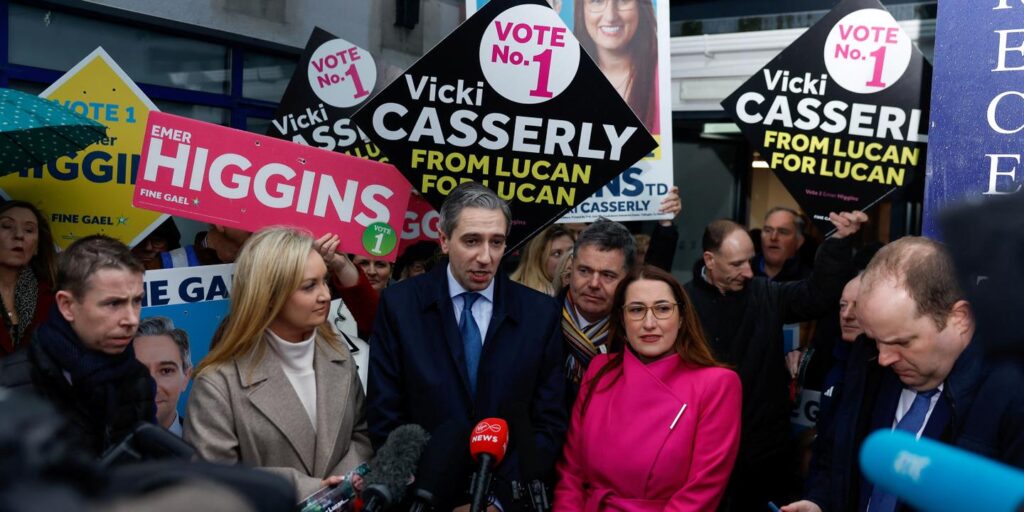
Ireland votes on Friday in a highly competitive general election, with the incumbent coalition of Fine Gael and Fianna Fáil locked in a close race against opposition party Sinn Féin. The campaign has been dominated by debates over housing shortages and the rising cost of living.
Polling stations open at 0700 GMT and close at 2200 GMT, as voters elect representatives for the 174-seat lower house of parliament, the Dáil. Counting begins Saturday morning, with partial results expected throughout the day, though the proportional representation system means a final outcome may take days.
Tight Race Among Leading Parties
Final opinion polls show the three leading parties—centre-right Fine Gael, Fianna Fáil, and leftist-nationalist Sinn Féin—each hovering around 20% support.
Fine Gael, led by Simon Harris, entered the race with an advantage. Harris, who became Ireland’s youngest-ever taoiseach (prime minister) at 37, gained popularity with his tech-savvy approach, earning him the nickname “TikTok Taoiseach.” However, the party’s momentum waned after a viral video showed Harris in a heated exchange with a care worker, drawing criticism.
In the 2020 election, Sinn Féin won the popular vote but failed to form a coalition. This paved the way for Fine Gael and Fianna Fáil to enter a power-sharing agreement, with the smaller Green Party joining to secure a majority. The two centre-right parties have alternated power since Ireland’s independence in 1921, but Sinn Féin is positioning itself as a viable alternative, focusing heavily on housing policy.
Key Election Issues
Housing remains a critical concern, with many young voters frustrated by soaring costs and limited availability. Retail worker Rachel McNamara, 22, said she plans to vote for Sinn Féin, criticizing the ruling parties for “broken promises” on housing. She and her boyfriend are considering emigrating to Canada due to the unaffordability of housing in Ireland.
Both Fine Gael and Fianna Fáil emphasize their pro-business credentials, arguing that their leadership ensures economic stability amid global uncertainty. Ireland’s economy relies heavily on foreign direct investment, particularly from U.S. tech and pharmaceutical companies. However, threats of tariffs and tax changes from abroad, especially under incoming U.S. president Donald Trump, have raised concerns about future economic security.
Sinn Féin, led by Mary Lou McDonald, has seen mixed support during the campaign. While some criticize its progressive stance on social and immigration issues, its focus on housing and its promise to break the long-standing Fine Gael-Fianna Fáil dominance resonate with disillusioned voters.
Possible Coalition Scenarios
No single party is expected to secure a majority in the 88-seat threshold needed to form a government, making coalition talks likely. Independents, who collectively poll at around 20%, could play a pivotal role in shaping the next administration.
Gail McElroy, a political scientist at Trinity College Dublin, noted that a return of the centre-right coalition is “a very realistic possibility,” but emphasized that “all is still to play for” as voters head to the polls.